Harold Davis's Blog, page 86
May 31, 2018
Visit Paris in the Spring with a small group of Photographers
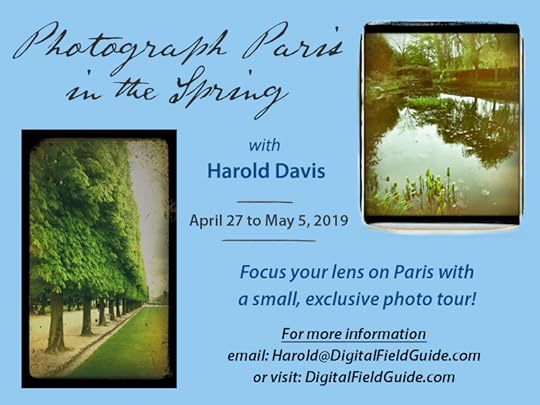
© Harold Davis
Visit Paris in the Spring with a small group of photographers. Early-bird discount applies. Click here for more information.

May 29, 2018
Summer Grass
In the traffic island in the middle of our Morning Glory Circle, as spring turns to summer the grass is drying and turning a California brown. I cut and carefully arranged a few stalks on my light box, and used LAB inversion to add a black background.
Before I had left for my Camino, I started photographing grasses and “weeds”—I think this has become a whole, interesting sub-genre for me. After all, it is the wise botanical artist who knows the distinction between flower and weed is somewhat arbitrary, and in the eye of the beholder. The less-well regarded weed can often surpass in structural interest the hoity-toity flower.
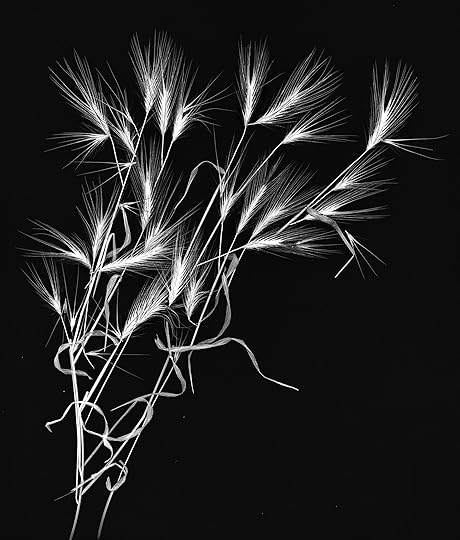
Summer Grass © Harold Davis
More images of grasses and such: Oxalis; Street Grasses; Decorative Grass; Blades of Grass; no real flowers need apply!

May 28, 2018
Cala Galdana
In 1969, Cala Galdana was a quiet and deserted sandy cove on the Balearic island of Menorca, off the Mediterranean coast of Spain. No human structures were in evidence, other than a footbridge over the small creek or slough that drained into the sea at Cala Galdana. You can see an iPhone shot of a print, from the lobby of one of today’s Cala Galdana hotels, at the bottom of this story—marred somewhat by reflections in the glass protecting the print, but you can get the idea of how this place was in 1969, which (historically speaking) is not so long ago. I mean, I can remember 1969…it was a very interesting year.
Today’s Cala Galdana is a European resort town. It’s not really unattractive, but it has been built up with vacation villas, restaurants, surf-and-sun shops, and a beach designed for cheek-to-jowl lounge chairs and umbrellas. For reasons unknown, the slough running into the bay has been moved to the right of the signature promontory (the creek was formerly on its left) and bridged with a massive structure. Several resort hotels sit like cruise ships on the land, with rows of identical balconies, and internal eco-structures (all-you-can eat buffets, a number of swimming pools and sunning areas) such that many guests never venture out of their front doors.
I do not know what the answer is. Tourism is the life blood of Menorca, and it seems unfair to ask the islanders not to have developed. Many resorts are created around the world with far less taste than Cala Galdana. Still, it sits badly with me that we rush to turn paradise into a paved parking lot, to chain the wonderful world that surrounds us, and to create ordered and iterative vertical grids in a land that once was wild and free.
Related: Mais où sont les neiges d’antan?
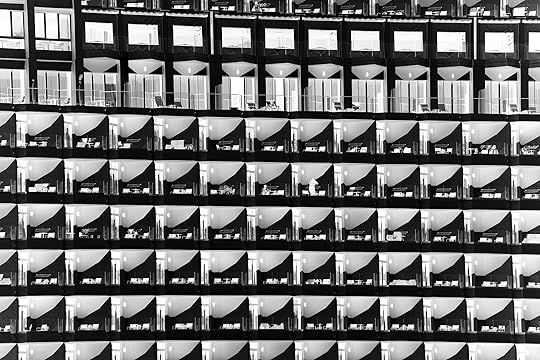
Balconies, Melia Hotel—Inversion© Harold Davis
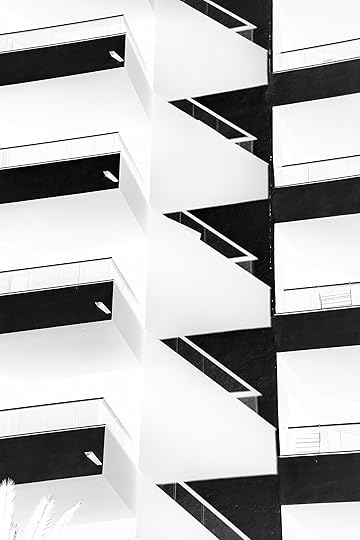
Balconies, Artiem Hotel—Inversion © Harold Davis

Balconies, Artiem Hotel © Harold Davis
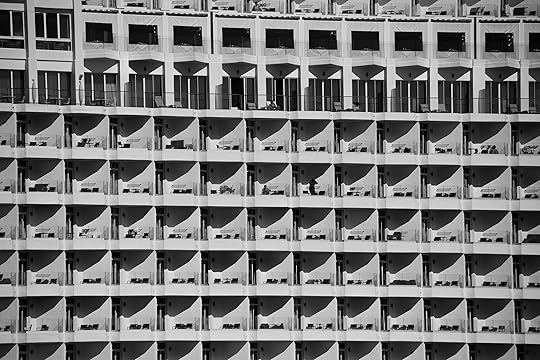
Balconies, Melia Hotel © Harold Davis
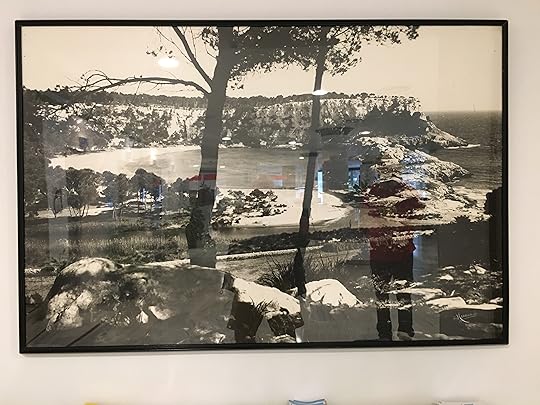
Cala Galdana in 1969 (iPhone capture of framed print)

May 27, 2018
Composition with Delphinium and Poppies
Composition with Delphinium and Poppies is a good example showing one of the organizing principles I teach in my Photographing Flowers for Transparency workshop and my books. The first premise is that there needs to be an organizing principle in a light box image (or in any photograph, or any image, for that matter!).
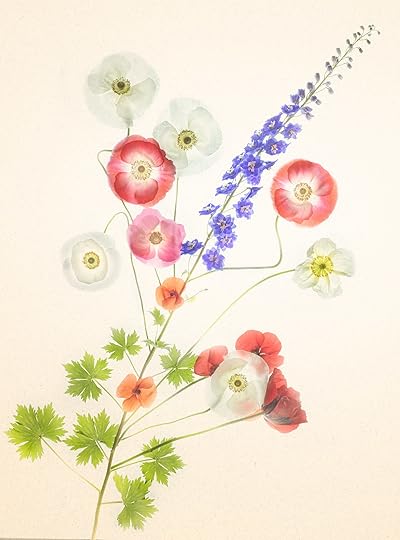
Composition with Delphinium and Poppies © Harold Davis
Taking the idea that one needs a compositional organizational principle as a given, it is then possible to create a taxonomy of possibilities. These include roughly circular, spiral, color field, another kind of color field, horizontal panoramic view, vertical panoramic view, leading off the frame, crossing the frame, and more (an example of each is linked). I’ve even essayed a paint-splatter effect with flowers!
This image (the Composition with Delphinium and Poppies) epitomizes what is probably the most common botanical organization: relying on a single, unifying stalk, in this case the delphinium’s, underpinned by the distinctive delphinium green leaves. You can find many examples of this organizing principle in my work.
Of course, the poppies don’t really belong attached to the delphinium stalk, and for literal-minded folks who notice this might be a distraction. But for a general audience, from a compositional viewpoint, the literal truth of the real world doesn’t matter so long as the composition looks holistically plausible.
One other point is that this composition is built around a strong diagonal. The entire delphinium leads the eye up and out to the right of the frame. It is important in this style of composition to have directed movement of a portion of the composition that contrasts with the more static elements (the poppies). It’s also worth noting that I photographed the image with the delphinium pointing up and out to the left, and reversed the direction by flipping the image horizontally in post-production.

May 26, 2018
Papaver Rhoeas
What joy to come home to my family and garden in Berkeley, and find spring still in bloom! These are two Papaver rhoeas—corn poppies—from our garden. I photographed each on a light box, and then inverted them in LAB color. You can find some info on these techniques in my website FAQs, and there will be a great deal more in the new book that I am working on!
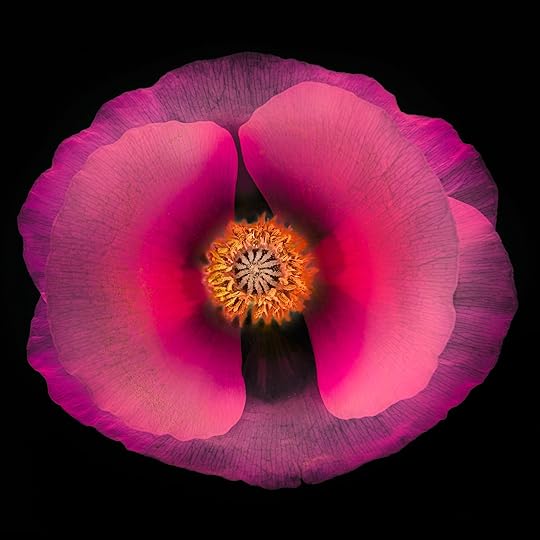
Papaver Rhoeas 1 Inversion © Harold Davis
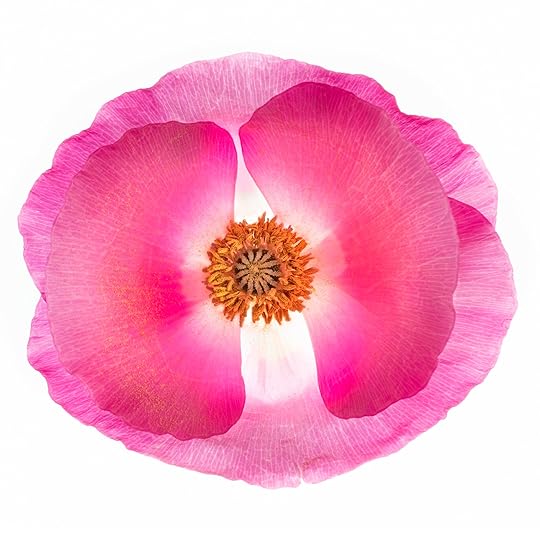
Papaver Rhoeas 1 © Harold Davis
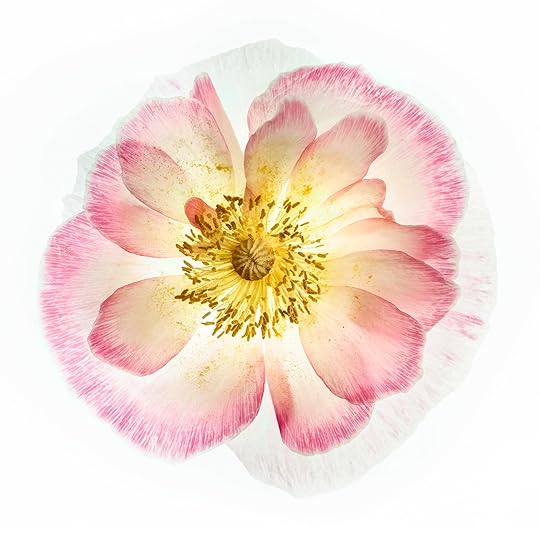
Papaver Rhoeas 2 © Harold Davis
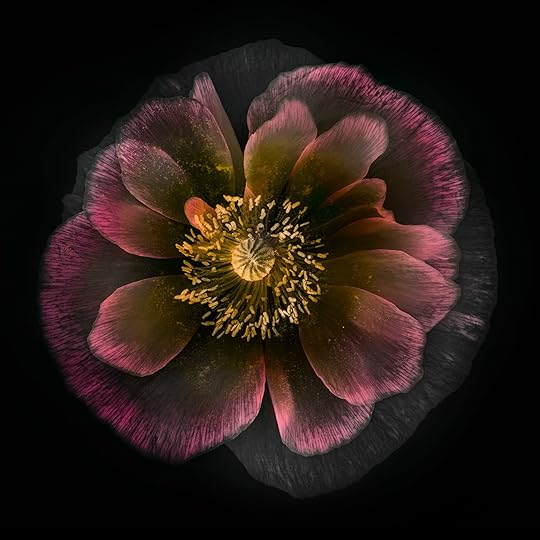
Papaver Rhoeas 2 Inversion © Harold Davis
The variation between specimens from the same flower cluster is pretty amazing: each flower is different, just as every person differs from each other, even when there are close genetic similarities!

May 23, 2018
Seriously Twisted
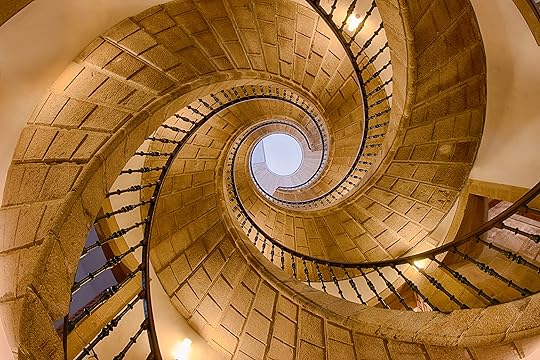
Twisted © Harold Davis
Here’s a four-panel construction based on the spiral image shown above using rotations and reflections:

Multiple Spirals © Harold Davis
Related stories showing the same staircase: Waiting for Escher and Triple-Spiral Stair.

May 20, 2018
Departure
To depart is to leave one place, but not to arrive as yet at another place. Departures are in-between. They are neither one place, nor the other. As such, departures signify hope, for one leaves on the journey with high expectations. And yet there is always melancholy, for leaving the familiar behind.
The lighthouse marks the path for leaving the safety of the shore, and the ship travels forward across the wide sea towards destinations unknown, hopes unfurled, and thoughts of future possibilities as yet only dreams, so therefore entirely possible.
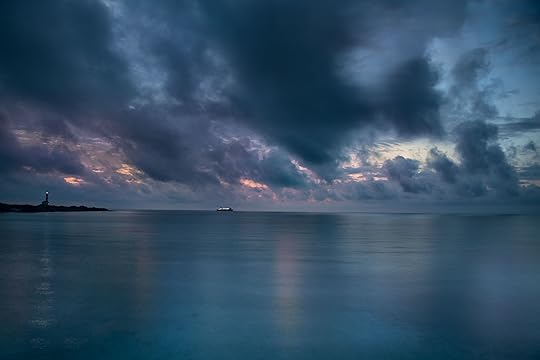
Departure © Harold Davis
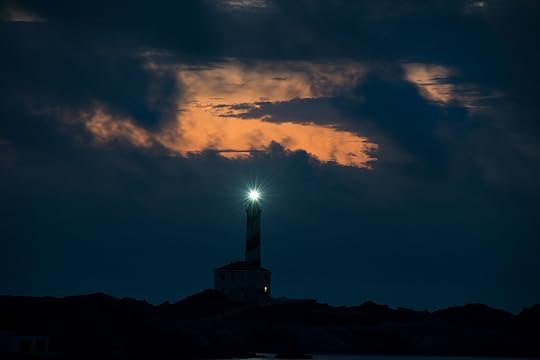
The Coming Dawn © Harold Davis
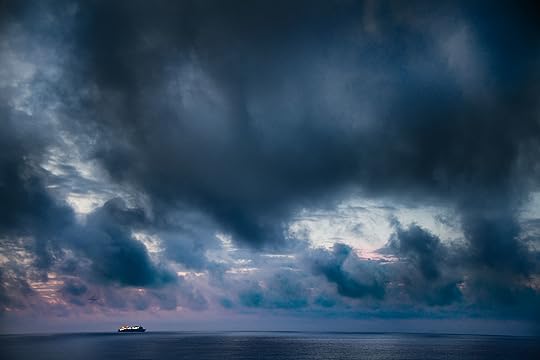
At Sea © Harold Davis

May 18, 2018
Pont d’En Gil
The Pont d’En Gil is a stunningly beautiful natural arch formation near Ciutadella on the island of Menorca.
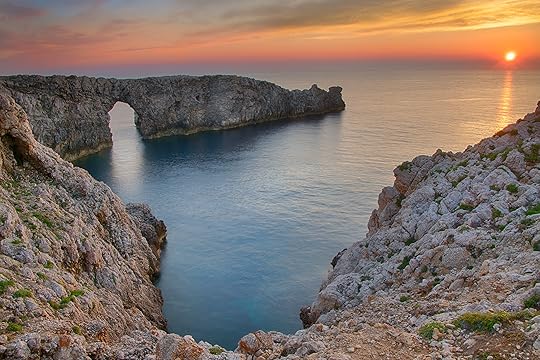
Pont d’en Gil © Harold Davis

Silhouettes © Harold Davis

May 15, 2018
Lighthouse on the Hill
Back to the Far de Cavalleria, this time at night. Weather conditions weren’t ideal. The idea had been a Milky Way arch over the lighthouse, but clouds—with an occasional burst of lightning—covered the relevant portions of the sky. We waited in the wind, with hope against hope, and having some fun chatting, even if it was a bit breezy. In the meantime, when dealt a bit of lemon soup, why not make lemonade?

Lighthouse on the Hill © Harold Davis
This is a fairly technical image. I used sets of in-camera multiple exposures, ten captures per set, fired manually with my remote. The camera was steady on my tripod for the entire period of engagement, although I stood close-by to make sure there were no wind-related accidents!
I tried to time the capture for when the light beams from the lighthouse were in an ‘X’ formation. I experimented with exposures a bit, but roughly the EXIF per exposure was 1/3 of a second at f/1.4 and ISO 3,200 on my Nikon D850.
I used my Zeiss 35mm f/1.4 wide-open to “scoop as many photons” in as I could. This lens is optically strong enough even at f/1.4 that it is great to use at night.
In post-production, I took four of the best in-camera composites (so this means I was working with forty images). With each of the four composites, I processed them twice in ACR—once for the light beams, and once in a lighter pass for the night sky.
I combined each of the two versions of each of the four composites using a layer mask, and primarily a simple gradient.
I then stacked the four finished versions, using Photoshop Statistics set to Maximum mode. This overdid things a bit, and added too much in the way of star trails. So I went back to one of the four layered composites, then layered on top of it bits of the other versions, and also a few elements from the stacked aggregation.

May 14, 2018
Far de Cavalleria
At the wonderful but somewhat exhausting PhotoPills Camp on the island of Menorca I photographed the Cavelleria Lighthouse this morning.
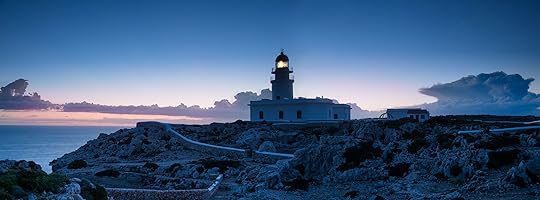
Far de Cavalleria © Harold Davis
We rolled up to the lighthouse in our bus in the pre-dawn darkness. It was windy. I set up my camera and tripod, and made the image shown above. Then I helped a few of the Camp students who had questions. As dawn came, I took my camera off tripod, and photographed the beautiful clouds.

Dawn Clouds, Menorca © Harold Davis
How fun to go from a lighthouse on the Atlantic coast of Spain to one in the Mediterranean. Here’s the light and fresnel lens on top of Far de Cavalleria just as the sun was coming up!

Fresnel © Harold Davis




